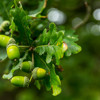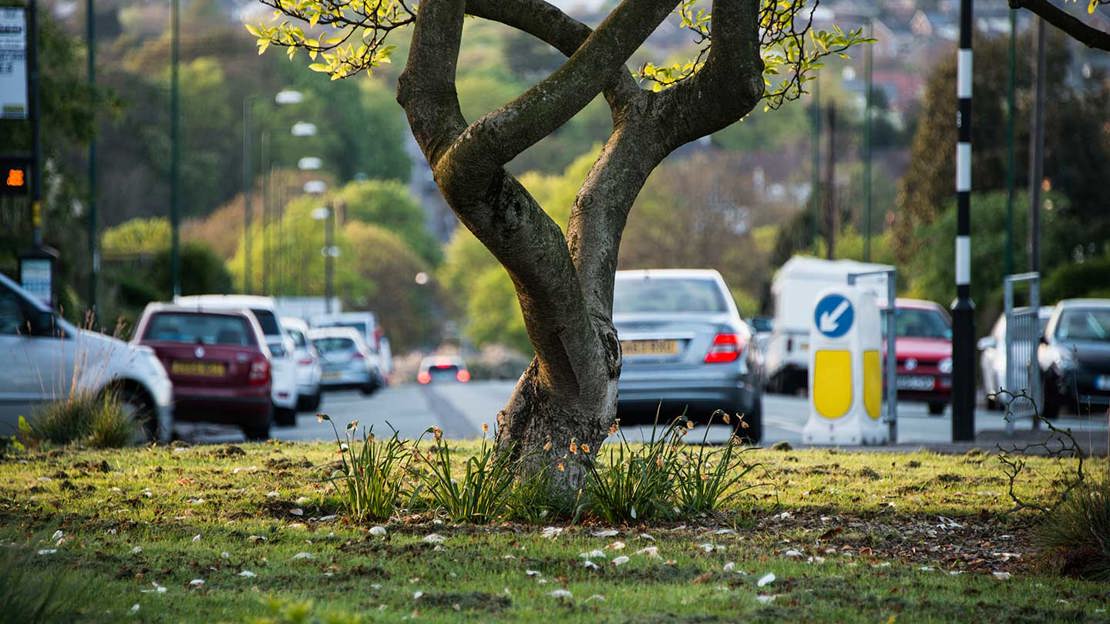GPs urge policymakers to invest in green space to reduce NHS pressure

The UK's leading woodland conservation charity
New research by conservation charity, the Woodland Trust, reveals that 96% of GPs surveyed want the government to take action to combat health threats from climate change and extreme weather.
In the poll of 255 doctors from practices across the country, 70% say they should be able to prescribe time out in nature to ensure the health of future generations.
The survey reveals that 77% of GPs believe more trees could help reduce the financial burden on the NHS, and 94% are calling for more trees around urban schools to combat lung diseases like asthma.
Previous research has found significantly lower asthma rates among children aged four to five in areas with more street trees.*
Almost half of doctors (45%) have seen a rise in patients reporting climate anxiety in the past 12 months, with the survey results clearly showing that against the backdrop of a changing climate, improving the environment must be integral to safeguarding people's future health.

Dr Darren Moorcroft, chief executive of the Woodland Trust, said:
"This powerful research, from trusted medical professionals, shows the need to prioritise the environment to reduce the burden on the NHS and save lives.
"Policymakers must take heed of these results. A startling 96% of GPs – who are on the front line of healthcare in this country – want environmental issues moved up the political agenda.
"They recognise the potentially life-giving benefits of a cleaner, greener world, ever more important due to the greater effects of climate change – and want their patients to be able to access those benefits more easily.”
Dr David Wrigley, deputy chair of BMA's GP Committee England, said:
"Our health and the environment are entwined in almost every way, and the potential benefits of more green spaces from both a mental and physical wellbeing perspective are yet to be realised. It's important that we ensure more people have equal access to these spaces and that we do everything we can to protect the future of our planet and its people.
"Reducing the carbon footprint of practices will not only help to do our bit to mitigate climate change, but it can potentially improve patient health, support our communities and reduce the financial burden placed on the NHS, which will have long term benefits for generations to come."
Trish Goodwin, Link Worker for Bolton GP Federation said:
"This poll clearly shows how GPs value the important role of nature and the environment in helping to reduce the pressure on their services and the NHS in general. With the changing climate we believe it should be a priority. From our perspective, people that attend green projects, such as walking in rural locations, report an improvement in physical health symptoms and state that there is a significant improvement in their mental wellbeing. It is critical that patients living in urban and high pollution areas have access to woodland and green spaces to improve both their physical and mental health."
Climate change is causing more extreme weather conditions, with heatwaves claiming thousands of lives each year. Trees can help reduce temperatures on the ground by up to 12°C. Doubling urban tree cover from 15% to 30% could lower average city temperatures by 0.4°C, and in some areas by as much as 5.9°C, potentially saving thousands of lives.
The Woodland Trust has urged people to join doctors in backing its climate campaign to get more trees in the ground to fight the twin threats of climate change and biodiversity loss. There are two ways to get involved – buy and plant a tree from their online tree shop or sign up to their monthly e-newsletter.
Dr Moorcroft added:
"We know it’s going to take more than trees to solve the climate crisis, but we won’t have a world worth living in without billions more of them. We have made it our mission here in the UK to plant 50 million more trees by 2030.
"Woods and trees make us healthy and happy. They lock up carbon, fight the effects of climate change, improve our health and wellbeing and reduce pollution and flooding; protecting nature, people and our planet. This is why we are asking for people to support our climate campaign to plant more trees."

The survey results, from research carried out among GPs from Dynata's UK Healthcare Panel, come hot on the heels of the launch of a new interactive tree equity map** that the Woodland Trust has developed in partnership with American Forests, which shows that in areas of lower tree cover there are less positive health outcomes. The map will allow a more targeted approach to tree planting in areas most in need.
With a general election looming, the Woodland Trust is calling on political parties to make increasing native tree cover a long-term target.
Among their election asks, the Woodland Trust is looking for:
- a new long-term target to increase native tree canopy cover in England to 16%, supported by a minimum canopy cover requirement of 30% for new development. Currently, less than a fifth of counties meet that target
- a £100 million Woods for People Fund to buy land and create woodland that's accessible, publicly owned and wildlife-rich where this is currently lacking
- targeted funding to help local authorities produce and update their tree strategies and ensure they have the staff and skills to plant and manage trees
- investment in commercial, local authority and community tree nurseries to rapidly expand the supply of UK and Ireland sourced and grown trees. This will support objectives for conservation and the urban environment, mitigate the risk of introducing pests and diseases and create viable green jobs.
Notes to editors
For enquiries please contact media@woodlandtrust.org.uk or 0330 333 5313.
About the Woodland Trust
The Woodland Trust is the largest woodland conservation charity in the UK. It has over 500,000 supporters. It wants to see a UK rich in native woods and trees for people and wildlife.
The Trust has three key aims:
- protect ancient woodland, which is rare, unique and irreplaceable
- restore damaged ancient woodland, bringing precious pieces of our natural history back to life
- plant native trees and woods with the aim of creating resilient landscapes for people and wildlife.
Established in 1972, the Woodland Trust now has over 1,000 sites in its care covering approximately 29,000 hectares. Access to its woods is free so everyone can benefit from woods and trees.
Citations
*Lovasi, G.S., Quinn, J.W., Neckerman, K.M., Perzanowski, M.S. & Rundle, A. (2008) Children living in areas with more street trees have lower prevalence of asthma. Journal of Epidemiology and Community Health, 62, 647-649
**Tree Equity Score UK reveals disparities including:
- neighbourhoods where tree cover per person is highest have roughly 30% less NO2 pollution and 10% less particulate matter pollution than neighbourhoods where tree cover is lowest
- neighbourhoods with the highest income levels have more than double the tree cover per person than the less affluent neighbourhoods, and have nearly 20% less nitrogen dioxide (NO2) air pollution
- lower tree cover has a dramatic effect on neighbourhoods, for example: those with the highest number of trees have up to 330% less air pollution and are 4°C cooler during a heat wave than neighbourhoods where tree canopy is lowest
- neighbourhoods with fewest people identifying with minority ethnic groups have roughly double the tree canopy per person than neighbourhoods with the most, and experience 50% less NO2 air pollution, 20% less particulate matter (PM2.5) air pollution and are 5°C cooler
- neighbourhoods where tree cover per person is highest have roughly 30% less NO2 pollution and 10% less particulate matter pollution than neighbourhoods where tree cover is lowest.

